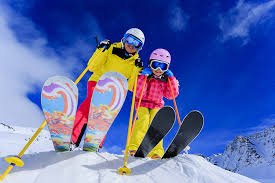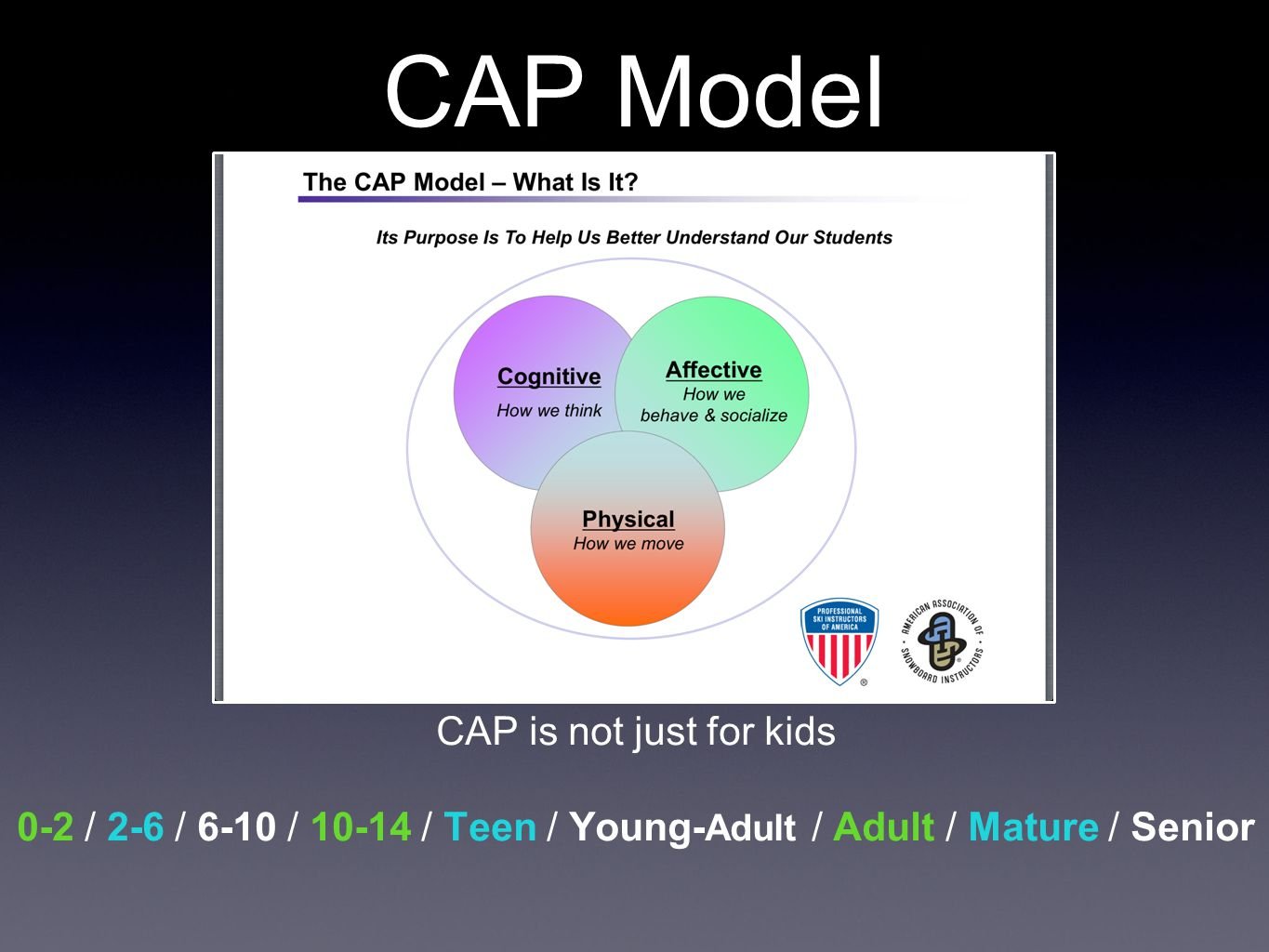Top 3 Things For Teaching Snowsports
Do you ever wonder how your kids LEARN ANYTHING in their ski snowboard group lessons? We instructors have a few tricks up our sleeves and it all starts with the CAP model of teaching from PSIA-AASI, Professional Ski & Snowboard Instructors of America.
Based off of Jean Piaget’s theory of development, this model for our teaching on snow serves the purpose of reminding us that your kids are not just passive learners. Rather, they are adventurers and explorers, constantly investigating the world around them.
Check it out!
#1 Cognitive: How We Think
The first thing that’s taken into account is the knowledge and mental skills of your child There are four developmental stages according to your child’s age and abilities observed. It’s just like any other classroom. Ski and snowboard instructors teach to the child’s actual developmental stage.
The best parents are the ones that aren’t afraid to give their coach a heads up on their child’s learning differences or diagnosis that might include Asbergers or ADHD. This helps the instructor to really determine which developmental stage your child is in. Once your ski or board instructor is clued into this, they can use their other teaching tools to give your child the best experience possible. Go mom & dad!
Unlike other public school classrooms, kids are grouped by their developmental stage AND ability level mastered. Depending on the children’s ski school near you, classrooms on snow are broken up into younger ages, 3-4yrs, 5-6yrs and older ages 7-teen years. By the age of 7yrs - teen, these stages start to overlap with other factors and children are also grouped by their skill level in skiing or boarding.
These developmental stages are ever changing of course. And what Piaget did not account for is that children exhibit more complex thinking in areas in which they are more familiar than in areas in which they are not. After all those ski or snowboard lessons, you and your children may just become that mountain adventure family you always dreamed of!
#2 Affective: How We Socialize
This affective piece of the model relates to the emotions AND motivations your child exhibits during their ski or snowboard lesson. Emotions play a part in every learning environment.
We are all social and emotional creatures. Learning a new skill in the cold, on the snow presents many more and new challenges for your child. This will definitely bring up lots of different emotions for your child.
A good ski or board instructor remembers ahead of time that your child is filled with a combination of fear and excitement and they adjust their teaching objective ASAP. Your instructor has been trained to make it their #1 job to facilitate a feeling of safety and trust with your child first. Next, fun cues, rewards, and games are used as motivation. Then, learning this new skill begins to be the fun adventure it was meant to be!
#3 Physical: How We Move
Just as we all learn differently, we all move differently too!
So, it makes sense then that children in the same developmental age stage might move differently or even have different needs that requires creative lessons or different equipment or coaches.
When your child’s movement capabilities are affected, your coach just like any other teacher, knows how to make adjustments in the way they teach a lesson. Your child clues into these teaching tools and learns better how to manipulate their ski or board through the snow.
If your child has limited movement abilities, then check out with your local mountain to see if they have “adaptive” equipment and “adaptive” coaches. Most mountains but not all, have these types of resources for your child who has limited use of their legs or arms. What makes an awesome parent in this case is one that doesn’t hesitate to ask for a coach that’s patient with children or an Adaptive coach.
Stay tuned for more tips on how to help your child with each of these three parts of the model while learning a new snow sport!


